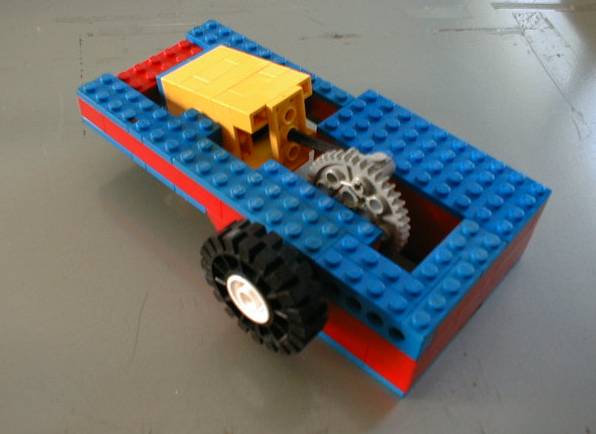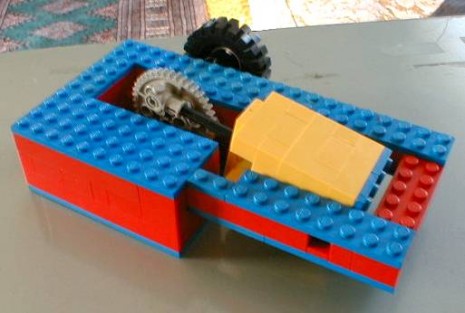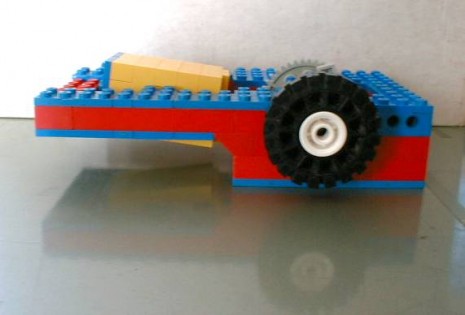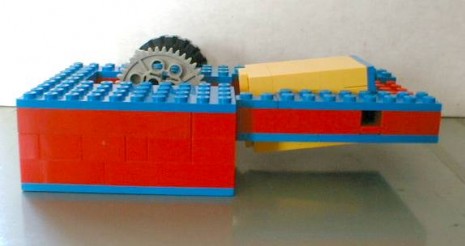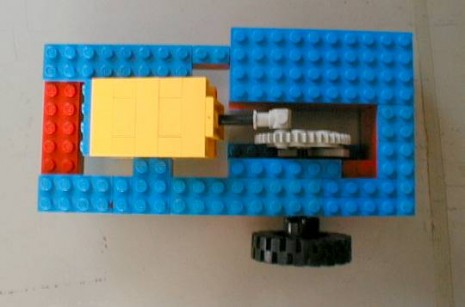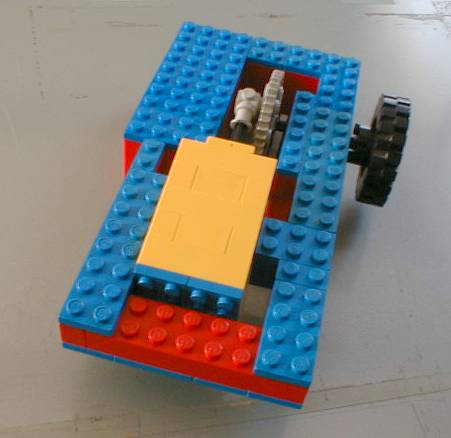Single acting one cylinder
Building a working model of a steam engine out of Lego wasn’t easy. I
built my first engine when I was 15, (that’s been quite a few years
ago) and still learning this! Building a solid structure, keeping
friction down, and keeping things balanced are important in the design.
I found that the engine’s rpm improves with a design that allows air to
escape during the exhaust stroke.
Here’s a shot of the air inlet. This inlet is configured so that the
hole in the side of the cylinder lines up with it at just the right
moments to provide the power stroke.
Veiwing from the flywheel side of the engine. I didn’t have the
standard “+” shaped hub for the tire, so I improvised using a
freewheeling hub and a 2×2 round from a space lego set which happened
to have the “+” hole through the center.
Here are two side views. Notice how the base of the engine is rather
massive. This accomplishes two purposes. It keeps the engine from
tipping forward and also dampens vibrations for smoother running.
(Believe me, it makes a difference.)Another thing to note is
the position the crank wheel and cylinder are in. This is the starting
position. A good hard blast of air into the inlet will set the engine
in motion without having to spin the flywheel.
Finally, top views. I don’t know if these photos are enough to go by to
build your own engine just like this, but it gives you a sure start.
